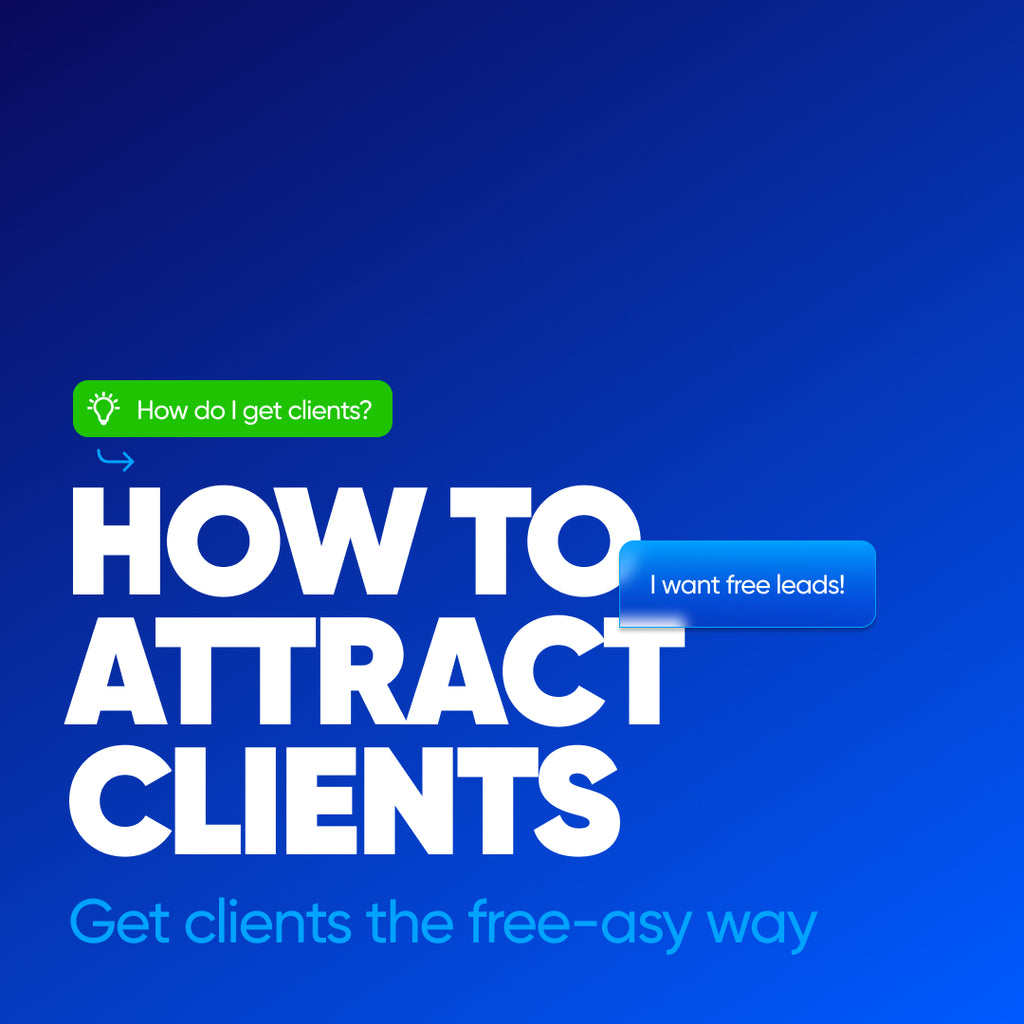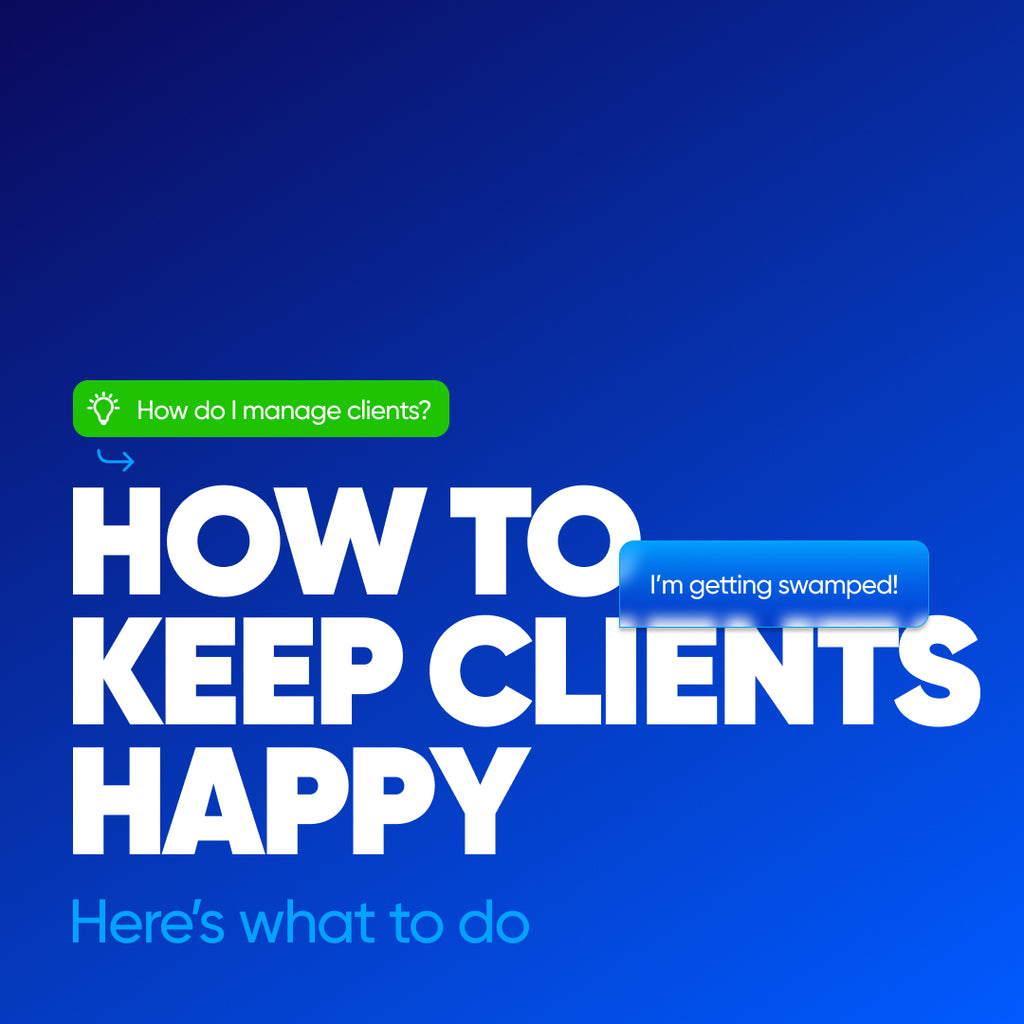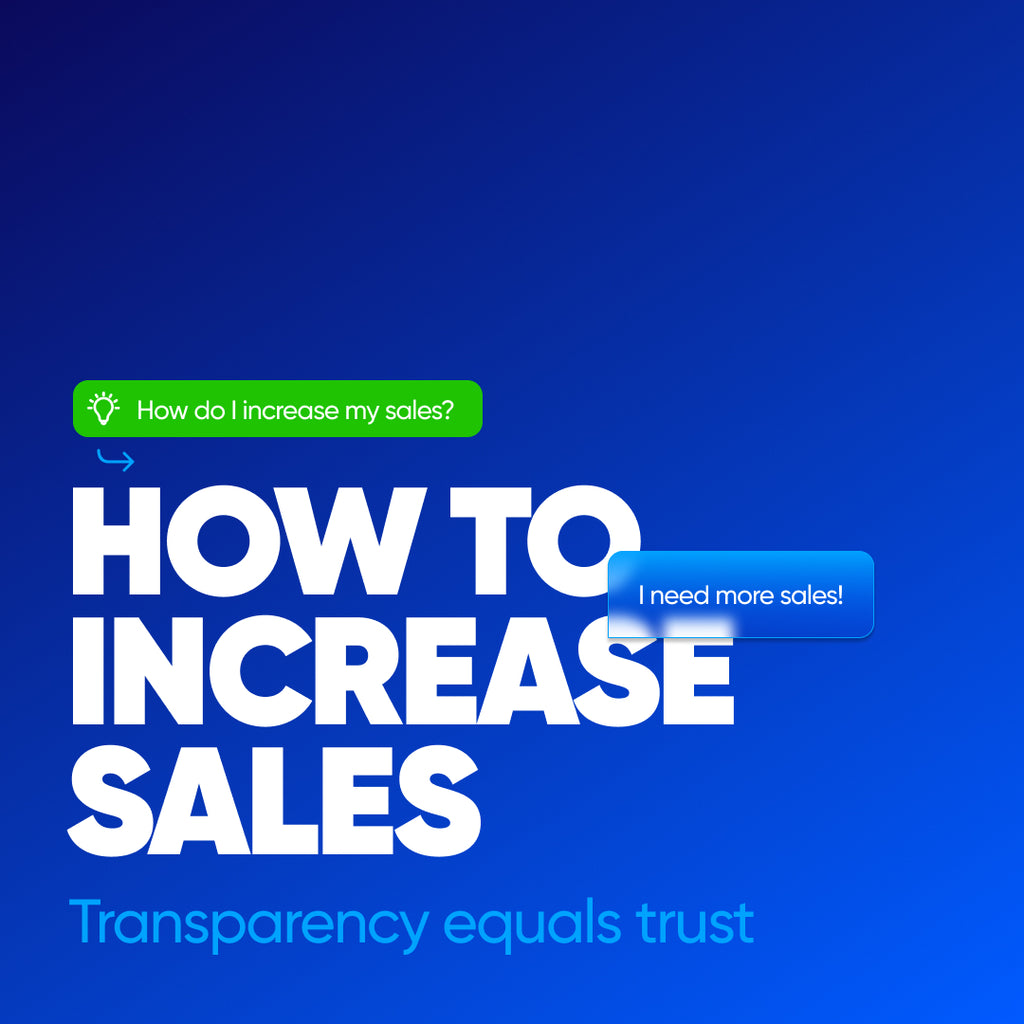There are three steps to earning a great living with eCommerce in 2023:
- Define the goal of what "making a living" is to you
- Build the system to achieve the goal
- Decide on a product or service which interests you
Here is how I make a living with eCommerce so you can too!
To explain in more detail, the first step is to determine what "making a living" means to you. You've envisioned the life you want. Now you need to break down the financial steps to get there.
The second step is to decide on a product, service, and digital product combination which interests you. One of my manufacturers in China said to me, "in China, if you're one in a million, there are ten thousand just like you." This means that if something interests you, there is a market for it.
The third and final step is building the system to achieve the goal of the first step. What we need to do here is a deep dive into the step-by-step process of achieving the goals. Answering these questions:
- How do you generate enough inbound traffic to sell your product without speaking with the client?
- How do you reduce customer acquisition costs as low as possible with organic traffic?
- How do you build an audience of your 10,000 "just like you" customers?
Let's dive deeper into each of these steps so you can achieve your goals to earn a living on eCommerce. When I built Dawg Grillz in 2017, then sold it shortly after appearing on the CBC TV Show The Dragons' Den, I aimed to understand the complete process of building a brand from scratch, selling it on eCommerce, and building a fully functional eCommerce business.
Step 1. How do you determine what it means to earn a living with eCommerce?
Understanding your goals becomes a primary concern so you can correctly set the goal, then interpret the path and design the system that will allow you to go down the path successfully. Many newcomers to eCommerce but the nice round of $100,000/year is the income goal.
It doesn't specifically need to be $100,000/year, but having a goal is better than none, and once you achieve this initial goal, you can analyze what it's given you. Once you have taken a look at the life that the initial success has brought you, it is simpler to make adjustments, but the first dollar is always the hardest.
As you reach each new goal, it's essential to ask yourself these two questions:
- Do I want to earn more money?
- Do I want more free time?
It's a delicate balance between time and income, and you will never reach a perfect balance with any entrepreneurial endeavor. It will always swing slightly too far one way or the other. It's essential to understand this and not get too stressed trying to achieve a perfect balance. Similarly, your mood will change from happy to sad, angry to joyful. It's Mission Impossible to accomplish an ideal time/money balance, but you should accept the mission, even if it may explode.
Step 2: Build the system to achieve the goal
Let me demonstrate how to get you on the path toward your first goal:
$100,000/year is a great goal. That income affords you a lavish lifestyle and can support a family. It's a common goal, so it's simple to put into perspective with some simple math. Let's break it down!
In this example, we'll use a $19.99 product. Whether physical or digital doesn't matter.
So your goal is $100,000 of income from eCommerce. I typically set easily digestible goals. If we divide that twenty-dollar item by $100,000, it seems an impossible 5,000 units sold. How do we get to 5,000 units sold without making it seem ridiculously high?
Easy, we break it down daily, figure out a realistic conversion rate, then figure out how to build traffic that will get us there. It looks like this:
- $100,000 / 365 = $275 per day
- $275 per day / $19.99 product = 13.75 units sold daily. Let's call it 14
- 1% conversion rate = 1,400 unique visitors to your site each day to sell 14 products
How to use organic eCommerce traffic to build an inbound sales channel
I'm all about real numbers and not blowing sunshine up anyone's ass by saying you'll quickly hit a 20% conversion rate and a 20% click-through rate. By using a much lower conversion rate, you'll be able to achieve your eCommerce income goals. Surprising yourself is a great way to increase motivation and your workload to achieve these goals.
Let's put these traffic numbers into perspective, shall we?
Here's how to build enough organic traffic to your site to build this income goal into an achievable one step-by-step:
- Start writing blogs that are related to the product
- Assume that each blog will achieve 500 unique visitors per month
- Do the math: We need 1,400 unique visitors per day, about 42,000 unique visitors per month, divided by 500 = 84 blogs
So to do this correctly, you will need 84 strong blog posts with about 3,000 words each. That's 252,000 words you'll have to write. This also seems impossible at times, but when you break down the fact that you can reasonably achieve a word count rate of about 30,000 words per week, you're only about nine weeks of hard work away.
How long should each blog post be? 3,000 words.
I chose this number in particular because I've found in my personal experience that this size blog post generates more traffic on average than smaller 500-700 word blog posts. These 3,000-word blog posts are often referred to as "pillar posts."
Pillar posts are critical to your blog writing strategy because they are often packed with keywords and information that give you great rankings for Expertise, and Authority, two of the main components of the E.A.T. principle. In particular, the E.A.T. principle for Google is Expertise, Authority, and Trustworthiness.
Simply put, Expertise is ranked based on how much content you produce. Authority seems to be rated based on the tiers of content that you're building and the relationship with one another. Trustworthiness is mainly about backlinking, which, if you check Google's terms and conditions, you're not allowed to promote, pay, or exchange links with other sites to boost your trustworthiness.
I say "seems to" a lot here, and that's on purpose because no matter who the expert is talking about them, it's assumed how the algorithm works. No one person knows how an artificial intelligence-based ranking algorithm delivers search results to viewers.
How do you get a Snippet quickly on Google?
I've received numerous Snippets, and they're fantastic. They work to increase your click-through rate because Google highlights them as the Authority on the answer for that particular search query.
Getting a Snippet is surprisingly simple. You have to answer the question in the first paragraph. Some blog writers love to bury content down the page and make users read forever to find the answer. Then if they don't see the answer, they go back to Google because your content sucks.
When a user goes back to Google and continues their search on the same topic, Google lowers its Expertise ranking. I believe this happens because if you had answered the question first, the user wouldn't have had to go back.
This answer is much easier now that we've learned how much traffic you'll need to achieve your goals. The answer is relatively simple! What can you write 250,000 words about in 2-3 months without research?
Step 3. How do I know what to sell?
Everyone is an expert in something, and it often aligns with their personal experience, likes, and dislikes. I could write about building brands and businesses every day forever. Ask yourself what you can write about forever, then create a product that relates to your knowledge base.
Choosing a product that interests you will keep you motivated. In the same breath, it will also give you a bit of imposter syndrome in the beginning because you won't get much traction in the first couple of months. This lack of traction has less to do with you not knowing what you're talking about and more about not building a community.
Ever wonder how people like the Kardashians can quickly build million-dollar brands and instantly turn them into successes? It's all about community. Community building takes time and can be slow, but your reach compounds with every piece of content. It seems as if everything influencers make is entirely passive income channels.
The main recommendation I have to make is that you decide to choose a few products within each of these categories that can start generating revenue:
- Physical Products
- Digital Products
- Services
- Affiliate Products
- Ad Supported Income
You will be able to see this in action throughout my website here. I'm primarily Service-based because that is what the Graphic Design and Website Development category is. But there are also Digital Products like eBooks, Courses, and Templates. There are also
How to create passive income with eCommerce.
You hear a lot about "passive" income. Everywhere you go, someone new is an expert in earning money without working. But it's completely false. Honestly, there's no such thing as "passive" as it's often sold. The whole "make a digital product, throw $50/day in ads at it and make a fortune" is dead.
You can achieve a passive income, but it requires a lot of work upfront. Gone are the days when people would pay for simple PDFs. These PDFs are often added as lead generation items to build email lists to build a community interested in you, the product, and the brand as a way to achieve their goals.
The problem with creating passive income that most people face is that there is an expectation of building something simple that will achieve your income goals. That is not true. It takes a significant amount of work to reach zero. Only once this work has been completed can you attempt to sell it.
eCommerce is a fantastic way to sell these passive products. I do it on the site you're on now. They consist of eBooks, Courses, and other digital downloads like templates. The passive part only comes after the hard work is done. My book The Freelance Shortcut took me over 200 hours to complete. That's 200 hours with zero income, and only once it's online can it sell. But if there is no community, there are no sales.
How do you build an online community with your personal brand?
Content. What you're reading now is content that builds my personal brand. You read it and either agree, and my personal brand value increases, or you disagree, and my personal brand value decreases. It's all quite simple.
But where to create content? That is the million-dollar question. Let me explain how I do it, and then you can decide whether the solution resonates with you or you want to change it up.
My main platform is my website. I want people to come here for their first impression. I do this because I can generate revenue quicker when I drive enough inbound organic traffic to my website. For example, if you're on my website now, you're a click or two away from making a purchase. If you had watched a video about this on TikTok, it would have to be so compelling that it brings you here, which is an added step. It's also a problematic step because everyone who uses social media knows about doom scrolling, where you sit down like a zombie and swipe your thumb through miles of content.
Visitors to my website typically land here through a Google search. You may type a question in Google, and my Expertise pops up in the results. You click the link and arrive at my blog. My blogs get far more traffic than my home page, even though my home page looks WAY better.
My inbound traffic-generating content stack looks like this:
- Write blogs to increase organic search engine traffic
- Make YouTube videos about the blog content
- Make LinkedIn posts about the blog content
- Make Pinterest posts about the blog content
- Engage with my community as often as I can
Now, you don't have to do this. Specifically, I wouldn't say I like making videos. I find them time-consuming and complex, with numerous takes. However, you might love TikTok, Instagram Reels, and YouTube Shorts. Everyone is different, but the main goal is to build a community and get them to begin the purchase process.
This isn't an "it depends" answer. There are plenty of wildly successful people that focus solely on written content, video content, and image content. You can be an influencer through any channel. You look at people like Ali Abdaal, who is 95% YouTube, and Justin Welsh who is 95% LinkedIn and you can see the success.
You don't have to be a one-trick pony or highly diversified, either. Don't fall into the trap of trying to be everywhere all at once, like choosing your product. It's important to build content that you like, in the format you like, so you stay motivated.
Motivation is key to winning this game. Consistent and continually adding content will be a net positive for your business.
Why do I like Blogs and SEO so much as my inbound traffic channels?
I love writing and don't like filming myself. It's nothing to do with confidence. I feel strange holding a selfie stick and talking into a camera. Is one more effective than the other? No. Written content is slower to gain traffic, but it keeps giving well into the future. Video content like TikTok is short-lived. You either make a great video, and it gets traction, or it gets doom-scrolled into oblivion.
Blogging and SEO are great because I can be slow. I can revisit each article numerous times, make updates, adding more content. Organic traffic from blogging builds over time, and it's very satisfying for me to see a blog post get no traffic for weeks, then all of a sudden, there are thousands of people reading it. Video is a much different game. It seems to me that a video you make either explodes and "goes viral" (it's such an annoying term) or does nothing at all.
A TikTok posted today will rarely be watched weeks or months again from now. The opposite is true for blogging, especially if it's optimized for search. The more time that goes by, the more traction your blog may get. I've seen blogs that are a year old and had barely any traffic explode in popularity a year later.
The conclusion:
So there you have it. You can now define the lifestyle you want, build a system to make it happen, and choose the product and platform to tie it all together.
Get in touch if you're looking for one-on-one coaching to move this process along faster!
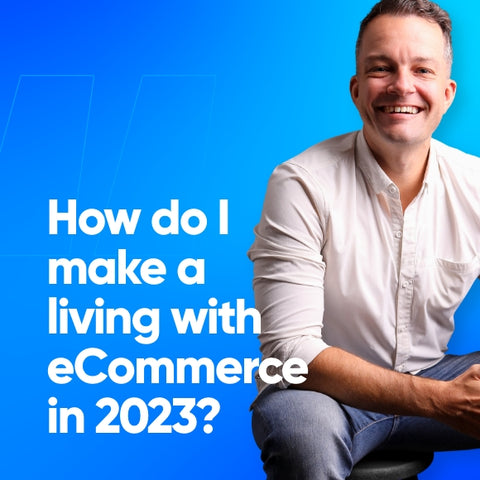
How do I make a living with eCommerce in 2023?
Then, pick one of these:
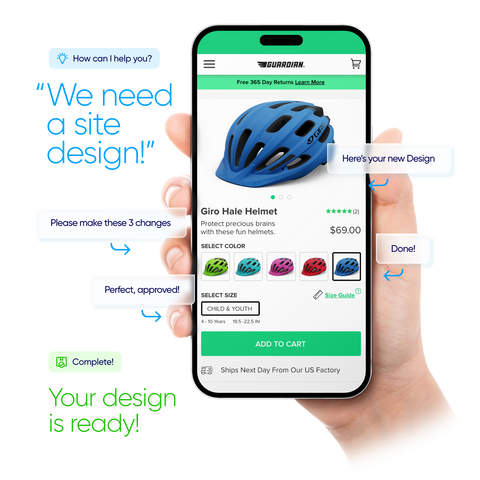
Hourly Website Development
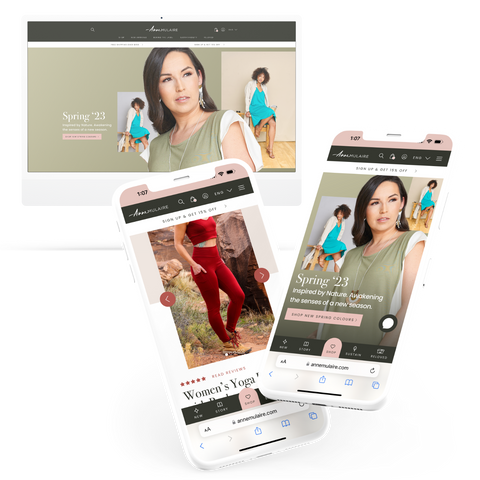
Shopify eCommerce Website

Shopify eCommerce Success Coach
Third, try these:

The tools you need to design your future!

Create your free eCommerce website today!


